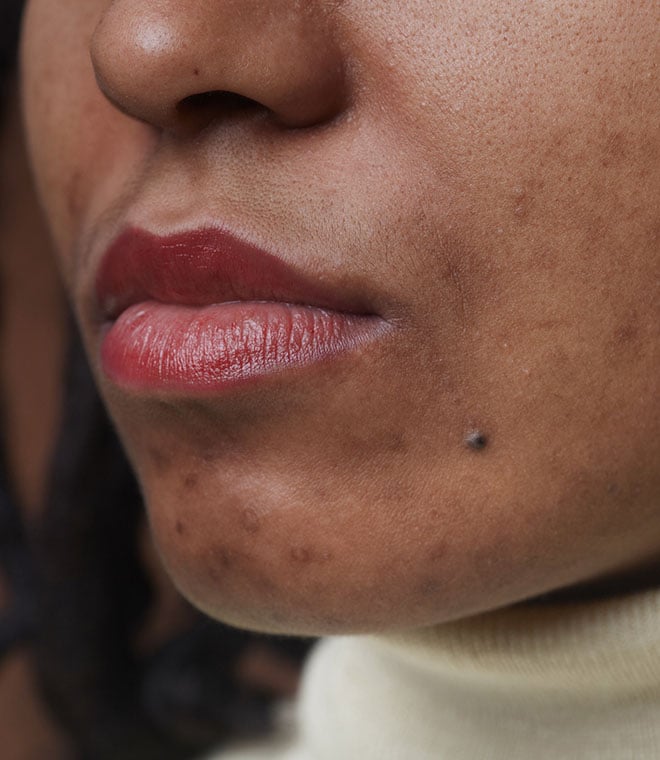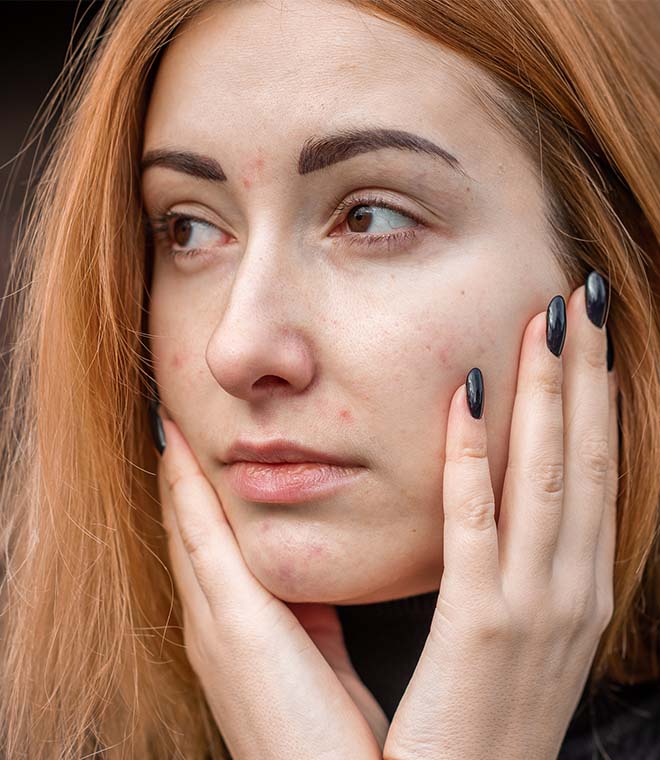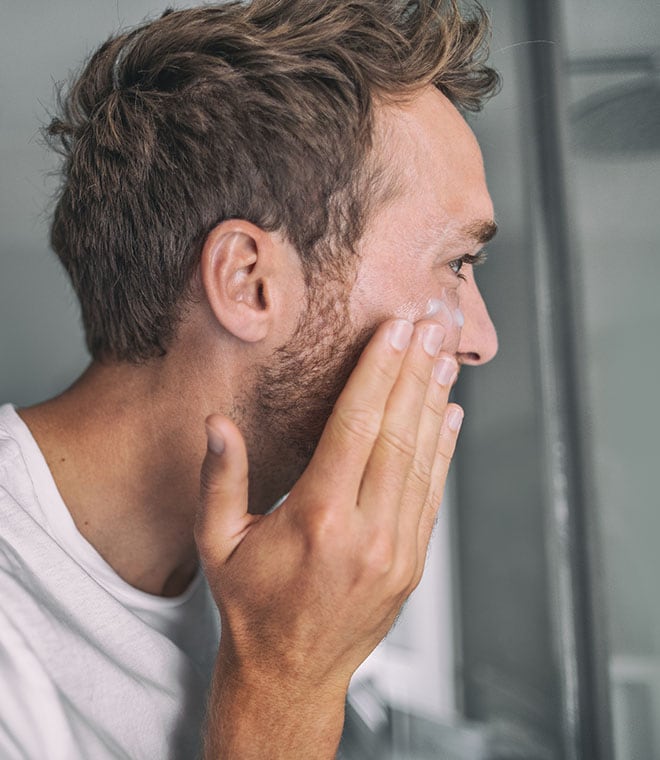Health
Can you take antibiotics for acne?
By Dr. Anna H. Chacon, MD, Fellow of the American Academy of Dermatology Apr 03, 2024 • 6 min
Many people with acne find that they can achieve clearer skin using over-the-counter topical products. However, for some people with more severe acne that doesn't respond to these topical remedies alone, antibiotics may be prescribed. There are a number of different topical and oral antibiotics that can help treat acne.
Acne treatment
Acne is a common skin condition characterized by a variety of different types of blemishes, from whiteheads and blackheads to pustules and cysts. It can occur at any age but most commonly affects adolescents. Acne can cause scarring, and it often affects a person's self-esteem.
The good news is that acne is treatable, but effective treatment requires the expertise of a dermatologist if over-the-counter ointments, cleansers and medications aren't working for you.
Prescription treatment options consist of oral and topical medications that help treat acne in a variety of ways, including reducing inflammation, fighting bacteria, slowing oil production and balancing hormones.
Antibiotics are a class of medications often used to treat acne by killing or reducing the bacteria that contribute to acne or that cause an infection related to acne. Many different types of oral and topical antibiotics are prescribed for acne, and your dermatologist will decide which is right for you.
Topical antibiotics
The most common topical antibiotic acne medications used to treat acne include erythromycin, clindamycin and minocycline.
Erythromycin topical
This antibiotic is known as a macrolide antibiotic. It's effective for stopping the growth of certain bacteria responsible for some types of acne.
Erythromycin topical comes in a gel, solution or pledget (small pad) and is applied twice a day, or as prescribed by your dermatologist. Side effects may include dry, scaly skin, allergic reactions like rashes or hives, and swelling of the lips, tongue or face.
Clindamycin topical (Cleocin)
This topical acne medication is in the lincomycin class of antibiotics and works by reducing swelling and stopping or slowing the growth of bacteria.
Clindamycin comes in a foam, gel, solution, lotion or pledget that is applied once or twice a day, as directed by your dermatologist. Side effects may include dryness, peeling, burning sensation and redness of the skin, new blemishes, headache or oily skin.
Minocycline topical
This medication is in the tetracycline class of antibiotics. It treats acne by killing the bacteria infecting the pores and reducing sebum, the oily substance produced by the sebaceous glands in your skin.
Minocycline comes in the form of a foam that's applied to the skin, typically once a day. Side effects may include skin redness, dryness, itching or peeling, as well as darkening of skin, scars, gums or teeth.
All of these topical antibiotics are available as stand-alone ingredients in the preparation or as a combination product with other ingredients, such as retinoids or benzoyl peroxide. In some cases, a dermatologist will create a unique mixture for an individualized acne treatment plan.
Because topical antibiotics may cause bacterial resistance, your dermatologist will likely include benzoyl peroxide or other acne medications in your treatment plan to minimize resistance to both topical and oral antibiotics.
Oral antibiotics
Oral medicines for acne include antibiotics that are taken by mouth, usually in the form of a pill. They're typically prescribed once it's been determined that the acne isn't responding to topical treatment alone.
Oral antibiotics may be used short term to control flare-ups, or they may be prescribed for several months to help control acne while you undergo topical treatments or procedures like chemical peels. Then, once those treatments begin to improve the acne at its source, you'll stop taking the antibiotics and use topical medicines alone to control it.
In persistent or severe acne cases, antibiotics may be used as a prescription acne medication for the longer term—up to around two to three months—to suppress flare-ups.
Several classes of antibiotics are used to treat acne:
Tetracyclines
The class of oral antibiotics most commonly used to treat acne are tetracyclines. These include tetracycline itself, doxycycline, minocycline and sarecycline. These antibiotics have antibacterial and anti-inflammatory properties, and most are available as generic medications, although some are also available under brand names.
A typical treatment duration for tetracyclines is two to three months, which will be adjusted as needed by your dermatologist. Common side effects of tetracycline include nausea, diarrhea and a higher risk of sunburn.
Tetracyclines are not recommended for children younger than 8 or those who are pregnant or breastfeeding due to the risk of liver injury and tooth discoloration.
Macrolides (erythromycin, azithromycin)
Oral erythromycin or azithromycin might be an option for people who can't take tetracyclines, including pregnant women and children under age 8.
Other options for people who can't take tetracyclines or for those in whom tetracyclines have been ineffective include:
Trimethoprim-sulfamethoxazole
Available under the brand name Bactrim, trimethoprim-sulfamethoxazole is an oral antibiotic in the sulfa class commonly used to treat moderate to severe acne, as well as other superficial skin infections.
The most concerning side effect of Bactrim is a rash in people who are allergic to sulfa-based medications. Diarrhea, upset stomach and vomiting can also be side effects.
Cephalexin
A commonly used oral antibiotic for people who can't tolerate tetracycline, minocycline or doxycycline, cephalexin is a member of the cephalosporin class of antibiotics. It's a good option for children and women who are or might become pregnant. It's typically prescribed twice daily for up to four weeks.
Although cephalexin is generally well tolerated, side effects may include nausea, rash and diarrhea, as well as reactions in people who are allergic to cephalosporins and, sometimes, penicillin.
Amoxicillin
Although amoxicillin isn't the most ideal antibiotic for treating acne, it may be the best option for some people. Amoxicillin is part of the penicillin class of antibiotics, and like cephalexin, it's a good choice for those who are unable to take tetracycline class antibiotics due to pregnancy or allergies.
Amoxicillin is generally prescribed twice daily. Side effects of amoxicillin include nausea, diarrhea, rash, yeast infections and yellowing of the skin and eyes. It can interact negatively with birth control, and it can increase the risk of liver damage when it's used with alcohol.
When topical acne products don't produce results, your dermatologist may prescribe oral medicines for acne, including antibiotics, which are taken for up to four months to help stabilize the skin while undergoing other treatments. Because antibiotics may cause bacterial resistance, they are not prescribed as a long-term treatment. Antibiotic therapy should be combined with benzoyl peroxide to reduce antibiotic resistance. As the acne changes over time, flaring up more frequently or less frequently with more severity or less severity, your dermatologist will adjust your treatment plan. If your acne isn't responding to treatment, see your dermatologist and ask if antibiotics may be right for you.
Clinically reviewed and updated April 2024.



